Shotguns are powerful, versatile, and capable weapons designed for sporting, self-defense, hunting…
And any other tasks in which lead is disseminated with great haste.
Shotguns fell out of favor for a little bit as the AR became America’s Rifle.
But the shotgun has been making quite a comeback these days, and people are picking them up once more.
Shotguns come in about a dozen different configurations and operating styles.

But for serious use, expect to see one of two kinds — pump and semi-automatic.
We’re going to talk a little more about what each of these shotties looks like, and do a little compare/contrast on general standard-issue details.
Before you know it, you’ll be preaching the good word of our lord buckshot, ‘kay?
Table of Contents
Loading…
Pump-Action Shotguns
Pump-action shotguns are, without a doubt, the most popular shotgun type out there.
American companies like Mossberg and Remington roll out pump-actions by the tons every year.
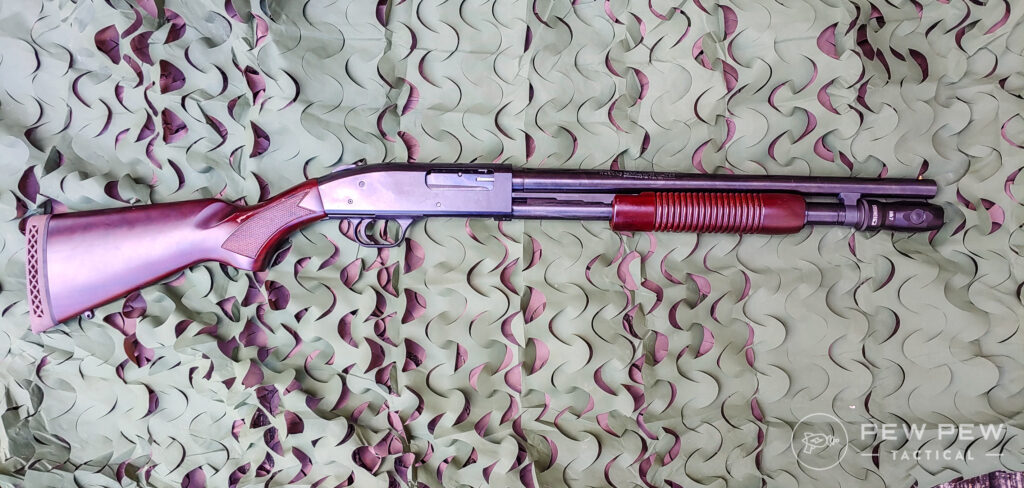
These shotguns are ridiculously affordable, and you can find pump-action shotguns everywhere, including Wal-Mart.
Worth noting, they are also called slide-action shotguns and are manually operated weapons.
To cock, eject, and load a round, the user must manually pull the forend to the rear and then push it forward.

Think that classic, butt-cheek-clenching chk-CHK! sound that nobody wants to hear in the dark — yeah, that’s your good ol’ pump-action shotgun.
This design has been around since 1897 — slide-action shotguns were invented by our patron saint John Moses Browning.
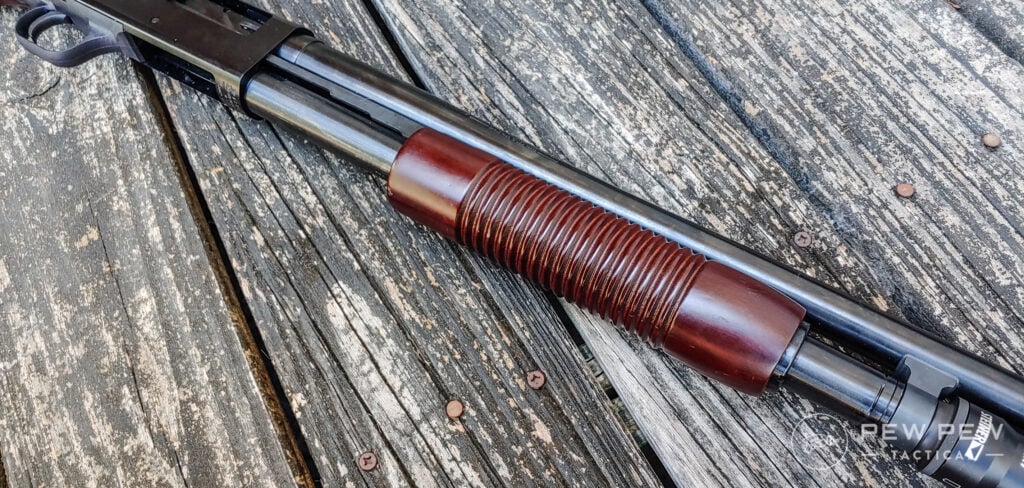
Pump-action shotguns are so popular because they can eat every load a shotgun can shoot and do so reliably.
This includes less-lethal loads, breaching loads, birdshot, buckshot, slugs, and even Dragon’s breath flame-throwing rounds. Hells yeah.

Add on that pump-action shotguns are easy to use, and you have instant success.
In short, boring terms — a modern pump-action shotgun will have dual action bars, a locking pump design, and will chamber rounds of various lengths.
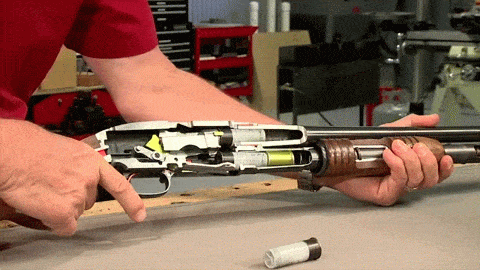
To learn more about pump-actions and how to manipulate controls, check out the Daily Defense video below!
Semi-Auto Shotguns
Semi-auto shotguns are gaining in popularity as they’ve become more and more reliable.
These models are becoming the military and police standard for combat shotguns.
Companies like Beretta and Benelli rule the market, with American companies like Mossberg swinging in a close second.
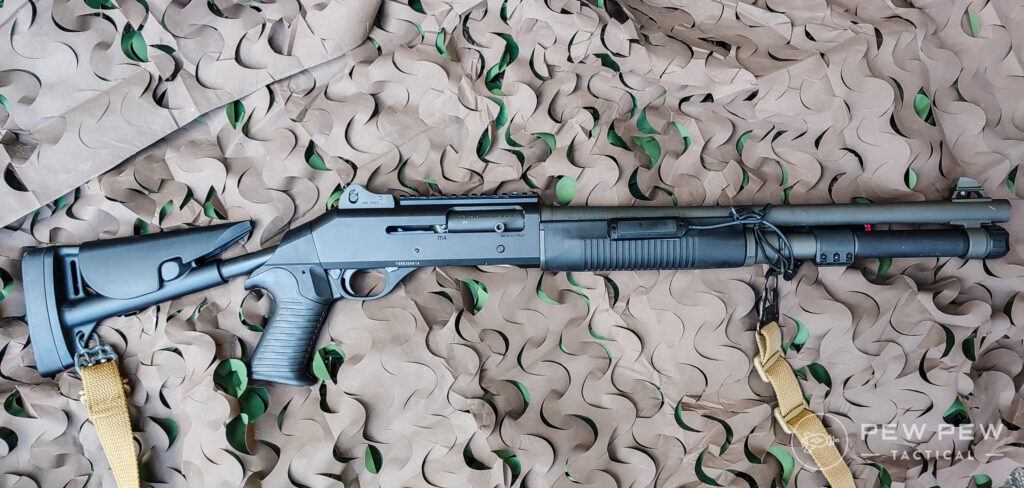
One thing to keep in mind is that these shotguns are pickier about their ammo, but faster to fire. After all, they do reload themselves with each trigger pull.
Semi-auto shotguns run off of two different operating principles: gas-operated and inertia-driven.
Gas-operated guns use gas generated by the burning gun powder. This often drives a short piston recoil system that propels the bolt backward to work the magic.
Pretty similar to your standard AR-type rifle.
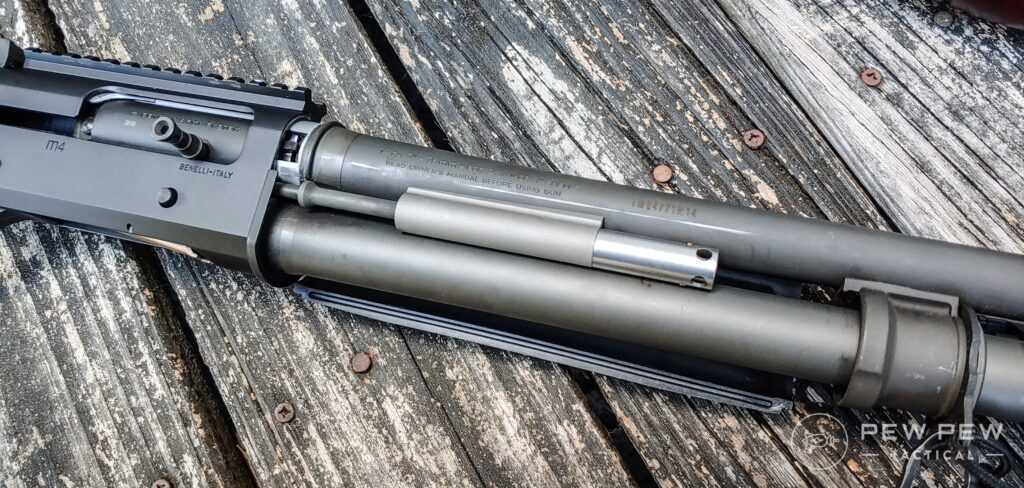
Inertia-driven is a type of recoil operation that uses a floating recoil spring and bolt.
Gas guns tend to have softer recoil, but inertia guns are typically lighter in weight and thinner overall.
You can also tack on optics, lights, and more to a gas gun without affecting function.
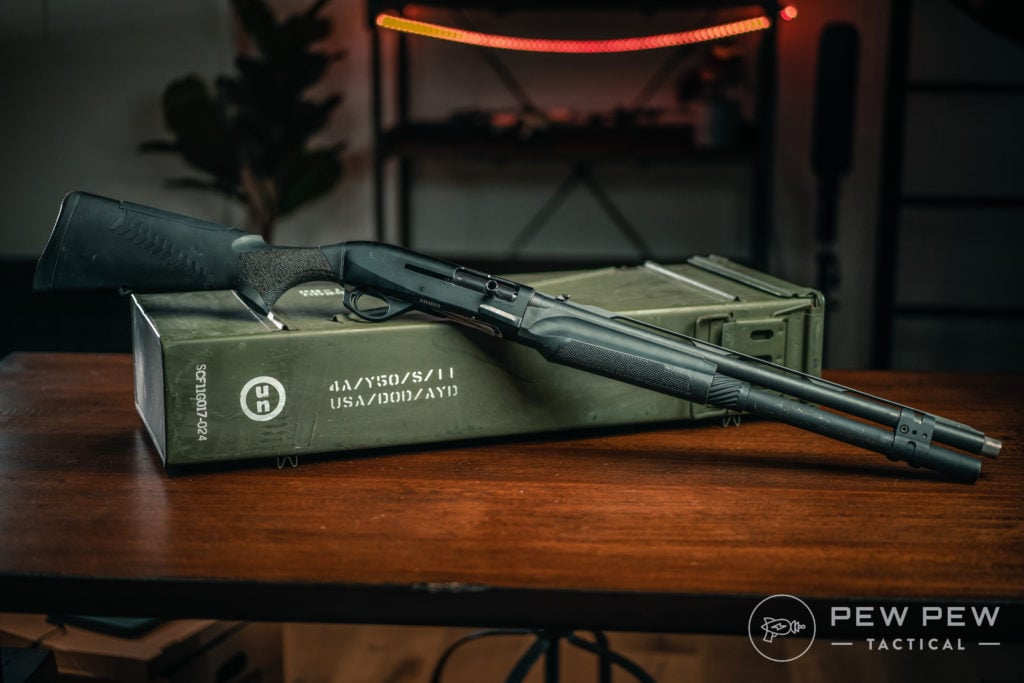
Inertia guns, on the other hand, won’t operate correctly when loaded down.
Like an AR, a gas-operated shotgun will allow you to regulate gas in some designs, but do require you a little more maintenance.
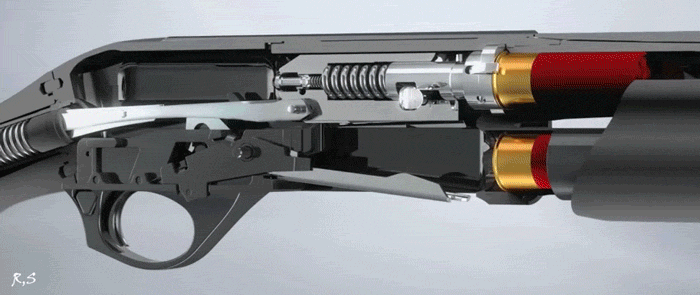
Pump-Action or Semi-Auto: Which Is Better?
These two types are similar in the fact that they are repeating weapons, and both can be used for similar roles like hunting, sporting, or self-defense.
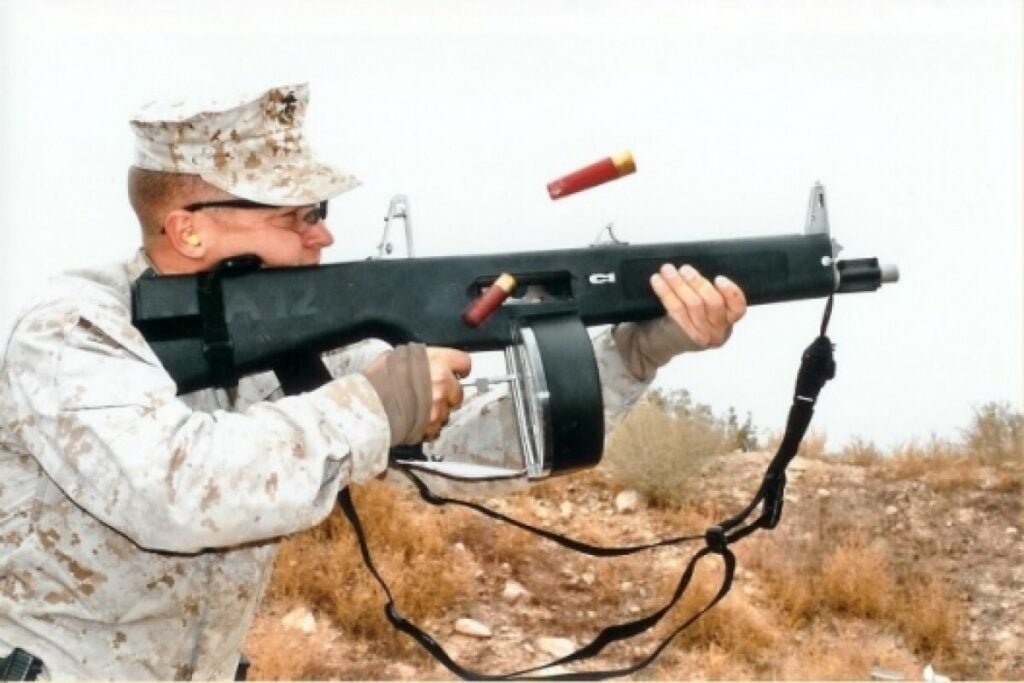
So, which is better?
Let’s break down some facts regarding both pump-action and semi-auto shotguns and see what we come up with.
Price
I’m using price first because it’s often the most important consideration when someone starts shopping for a gun.
Shotguns in these categories are typically affordable, and not priced like a KAC rifle.

In terms of just shotguns, pump-actions are more affordable. Not only are they budget-friendly, but even at lower price points, they tend to be more reliable.
Cheap pump-actions tend to work better than cheap semi-autos.
It’s actually hard to mess up a pump-action shotgun. Not to say it hasn’t been done, but it’s rare.
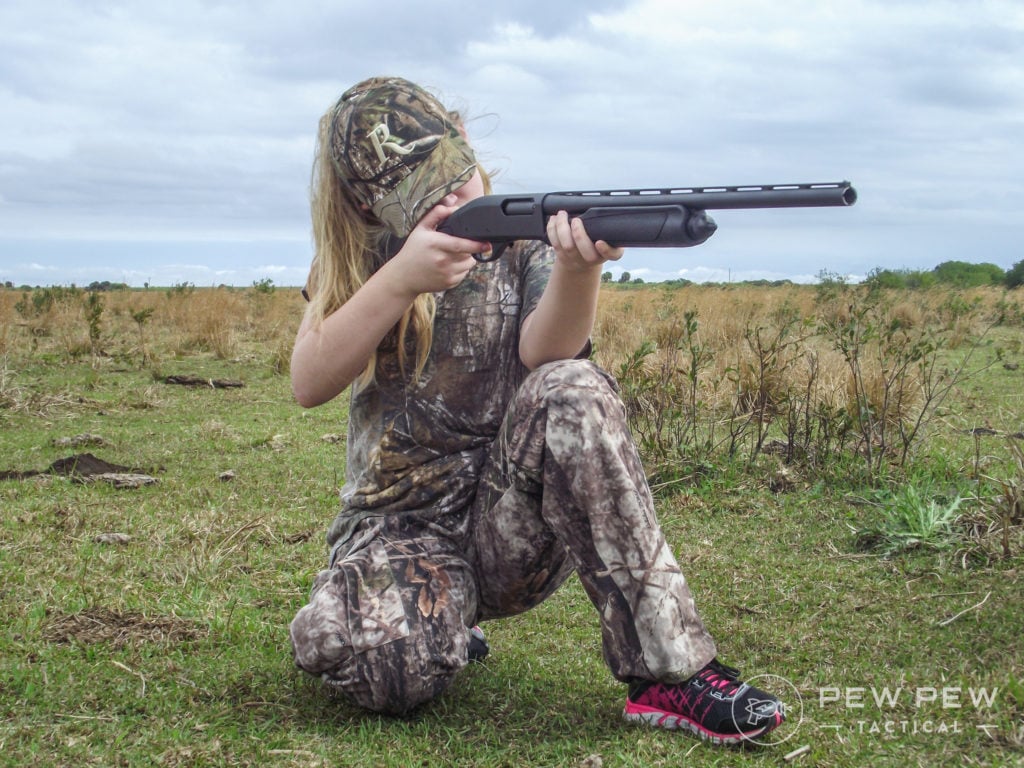
A good pump-action shotgun, like a Mossberg 590, can cost around $400.
That’s a solid combat shotgun designed to last.
Another Mossberg, the semi-auto 930 SPX, costs around $750.
Prices accurate at time of writing
Prices accurate at time of writing
-
25% off all OAKLEY products - OAKLEY25
Copied! Visit Merchant
If you want a top-of-the-line semi-auto shotgun, the Beretta 1301 will cost you up to a $1,000.
And the Benelli M4 goes for even more — closer to $2,000.
Prices accurate at time of writing
Prices accurate at time of writing
-
25% off all OAKLEY products - OAKLEY25
Copied! Visit Merchant
So, when trying to save some dough, pump-action might be the better option.
Reliability and Maintenance
With price out of the way, let’s talk reliability and maintenance.
Spoiler alert, this is another category where pump-action shotguns tend to pull ahead.
Pump-actions work with nearly any ammo. With some models that even includes short 1.75-inch shells.
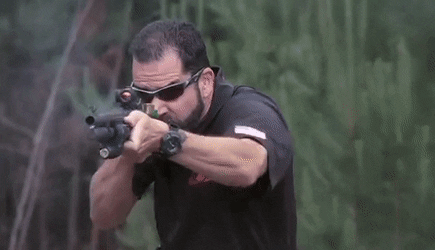
Pump-action shotguns also consume reduced recoil loads, less-lethal loads, and even novelty loads like rock salt (to deal with those pesky ghosts).
As mechanical objects, pump-action shotguns tend to be inherently reliable.
The downside, like many, is the human element involved in using one.

Pump-action shotguns often fail due to the user…not the weapon itself.
Short stroking is a real issue that takes lots of training and practice to avoid.
Pump-action shotguns are also lower maintenance than semi-autos.
The guns require very little cleaning, and they can easily operate while being absolutely filthy and full of dirt, carbon, and more.
As long as the pump can move, the gun can cycle.
Semi-auto shotguns are like any other semi-auto weapon and can jam, which is known as a failure to cycle.
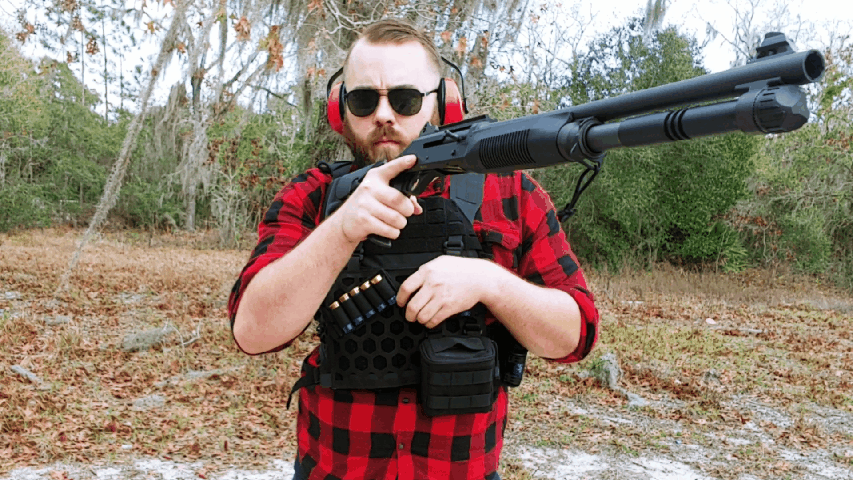
That said, semi-auto guns have gotten a lot better in the last 20 years.
The aforementioned Mossberg 930 SPX series, for example, is a reliable semi-auto option. (It’s also affordable!)
Prices accurate at time of writing
Prices accurate at time of writing
-
25% off all OAKLEY products - OAKLEY25
Copied! Visit Merchant
Semi-auto shotguns tend to be ammo specific as well…but even that has gotten better.
My Benelli M4, for example, can fire reduced recoil 00 loads without issue, as well as cheap birdshot for training.
However, no semi-auto is going to cycle less-lethal loads, novelty loads, or mini shells.
Prices accurate at time of writing
Prices accurate at time of writing
-
25% off all OAKLEY products - OAKLEY25
Copied! Visit Merchant
Semi-auto guns also need to be cleaned and oiled to ensure proper operation.
They tend to require more care when it comes to service and maintenance. In short, it’s good to keep them clean and lubed.
Ease of Use
When we get to ease of use, we do see some interesting developments.
Semi-automatic guns only require that the shooter pulls the trigger between shots.
A pump-action requires a bit more manipulation than that.

Semi-autos are often easier to handle under stress due to their design. All the shooter needs to do is pull the trigger.
The semi-auto nature eliminates short stroking issues and even allows a shooter to use one arm to shoot if needed.
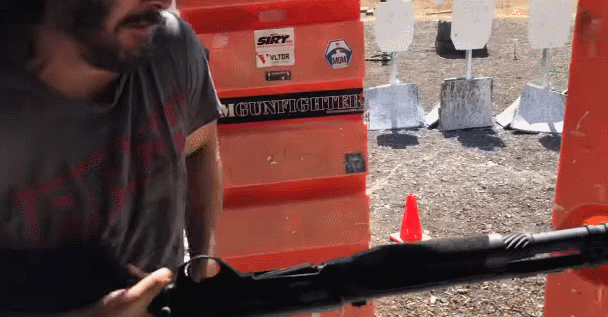
Using a pump with one arm is possible…but very difficult.
Semi-auto guns would allow you to clear objects, open doors, or hold something in general without compromising operation.
But there is a downside. (Isn’t there always?)

Inertia driven semi-auto guns must be shouldered to function correctly.
In weird positions, they can fail if not held correctly.
Like short stroking, this can be overcome with proper training and learning how to hold the gun with tension at both ends.
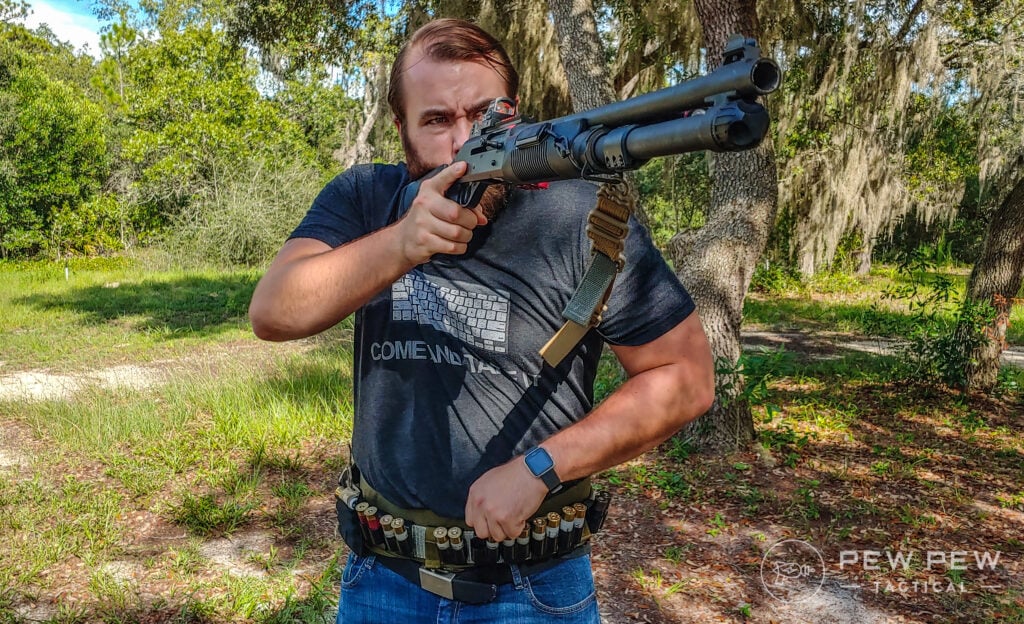
Under stress, this must be accounted for as it can be difficult to accomplish if you haven’t put the time in to train.
A pump-action doesn’t care how you hold it, on the other hand. It will just work and work and work.
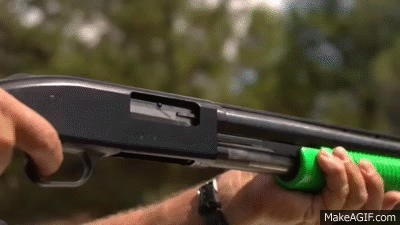
As we mentioned before, the downside to a pump is the user and their level of expereience.
Short stroking a shotgun can cause a failure. Training is the key to avoiding and overcoming that.
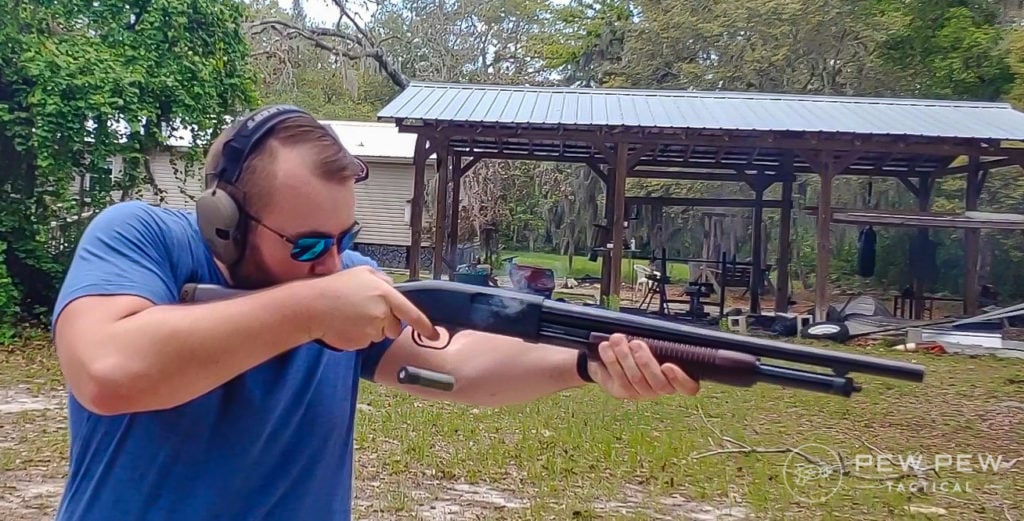
Other than that, ease of use will vary between each gun.
The Mossberg 500 is different than the Tavor TS12. However, the Mossberg 500 isn’t much different than the Remington Versa Max.
Prices accurate at time of writing
Prices accurate at time of writing
-
25% off all OAKLEY products - OAKLEY25
Copied! Visit Merchant
Recoil
Everyone is always so scared of shotgun recoil, and to them, I say you just need to learn the Rob Haught Push/Pull method.
It won’t be an issue for you then.
That being said, there is a considerable difference in how pump-action and semi-auto recoil.
Pump-actions give you the brunt of the recoil. It slams rearward and has nowhere to go but into your shoulder.
Semi-auto shotguns absorb some of that recoil through their actions and reduce it significantly.
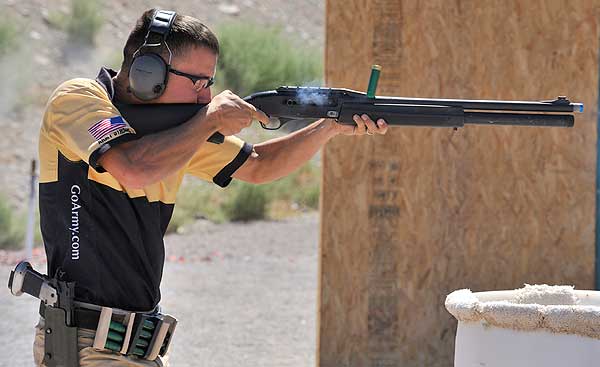
A reduced recoil load in a 12-gauge semi-auto shotgun feels more akin to a semi-auto rifle than a shotgun.
If recoil is a big concern, then a semi-auto shotgun is what you want.
Conclusion
Besides the basic operation, choosing between a semi-auto shotgun and a pump-action really comes down to price, recoil, and ease of use/maintenance.
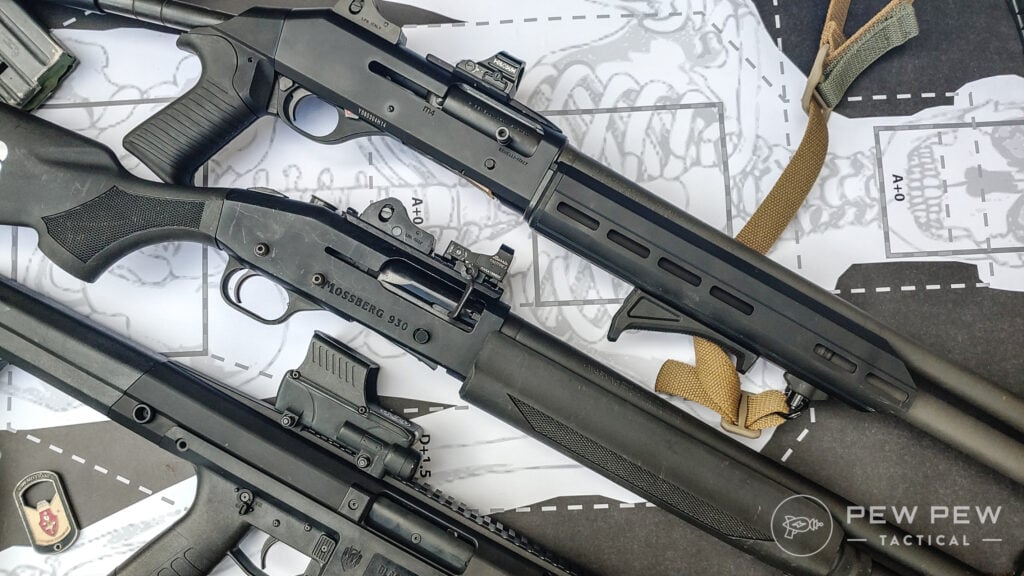
I prefer semi-autos for defensive use because I get faster follow up shots. I also like being able to use it one with one hand.
Not to mention, the reduced recoil is nice.
That’s not to say I don’t shoot and love pump guns. I’d still trust one for home and self-defense.
So which is it? Pump or semi-auto? Let us know what you prefer and why in the comment below. Meanwhile, check out everything shotgun related in our Shotgun Reviews: Everything Scattergun.

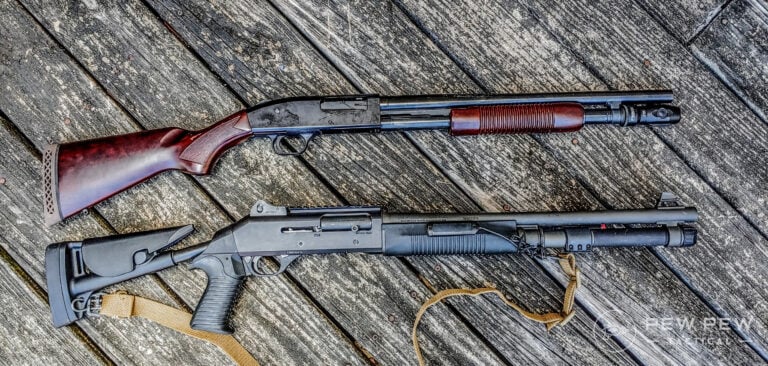
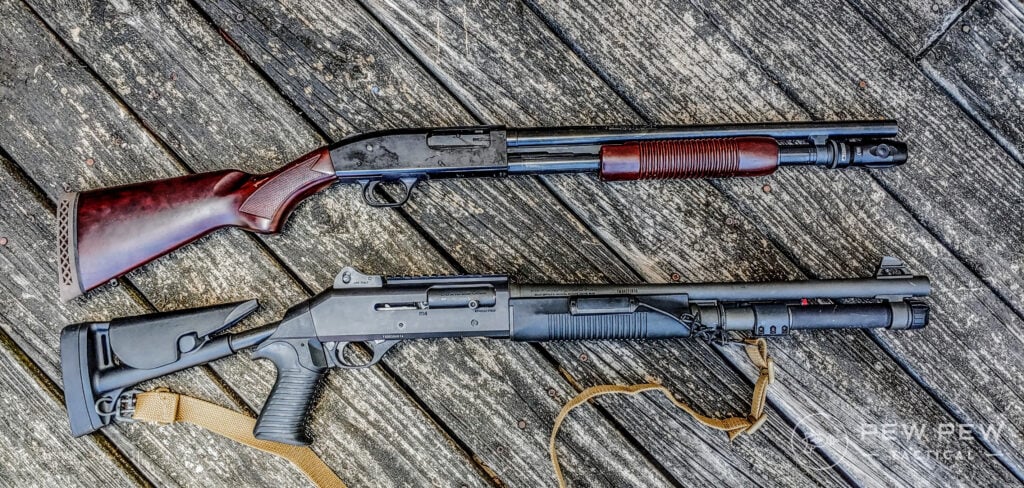












7 Leave a Reply
I think that, due to being lighter and therefore more manouverable, and also more reliable, pump guns might be better for self or home defense. and if they're 15 guys outside, then well.. (loads dragons breath shell with malicious intent)
Benelli M3, so you can do both
pump ftw, obviously
Great article, Travis! I will reiterate your comments regarding short stroking a pump gun. Train and train some more until the correct technique is second nature! You might shoot just fine while training, but under duress you will short stroke it! Obviously I am a pump action guy and own several since the early eighties. I've only ever owned one semi-auto, a Browning that just wouldn't make it through a round of skeet without having to stop and clean it. I don't knock semi-autos, but after having it I just never bothered with another since my pumps continue to work so well and really are more versatile where loads are concerned. Speaking of loads, what in the world would you use a "dragon's breath" load for other than maybe starting the range on fire?
Pump FTW
How do the Remington 870 and 1100 match up?
Pump shotguns are illegal in england and australia